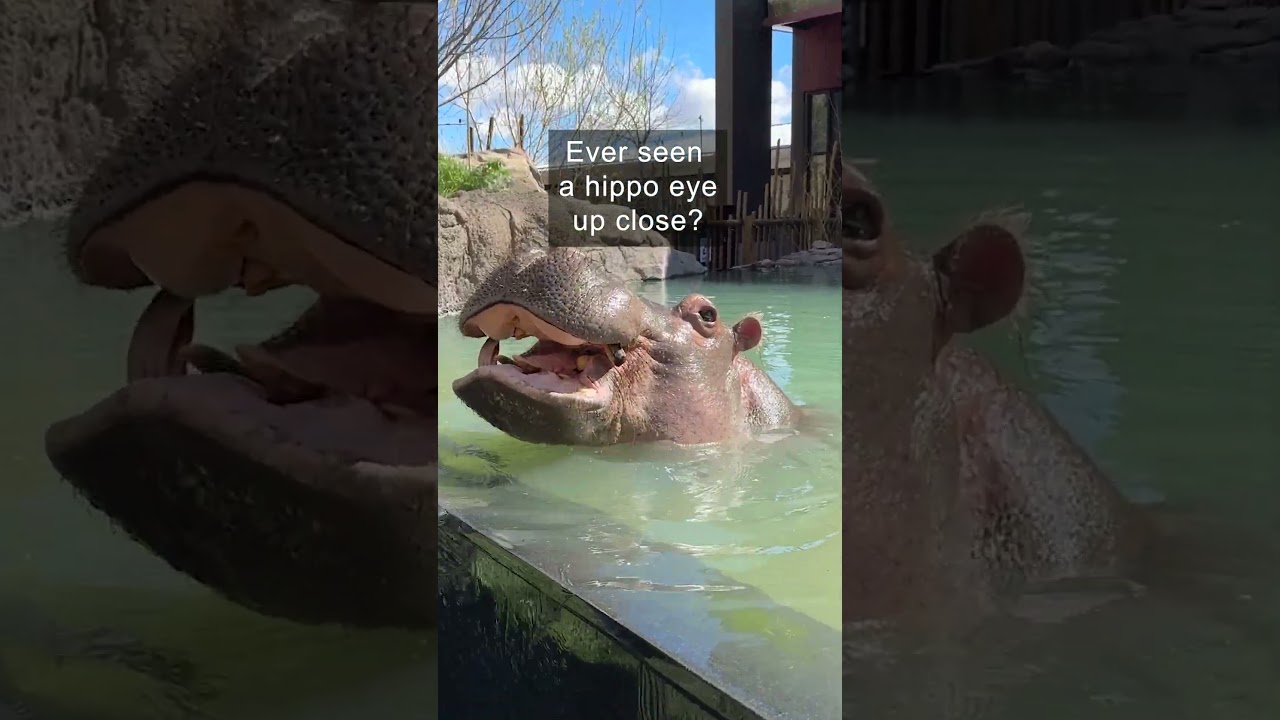- The physiology of hippopotamus eyes and their unique adaptations for an aquatic lifestyle
- The role of zoos like Kasai in educating the public and promoting wildlife conservation
- The importance of animal welfare and enrichment in zoo management
- Monitoring and research on hippopotamus health and behavior in captivity
- Challenges and strategies in the conservation of hippopotamuses in the wild and in managed settings
Hippos are fascinating creatures, and their eye physiology is a testament to their highly specialized adaptations for aquatic life. Have you ever wondered how these massive animals protect their eyes while submerged? Let’s delve into the science behind this remarkable ability. Hippos, such as those at Kasai, have a clear membrane that covers their eyes when they dip below the water’s surface. This membrane is known as a nictitating membrane, and it acts much like a pair of built-in goggles, allowing hippos to see underwater while shielding their eyes from debris and infection. Interestingly, this adaptation is a perfect example of evolutionary ingenuity, providing hippos the ability to effectively navigate and feed in their watery habitats.
Zoos worldwide, including Kasai, play a crucial role in educating the public about the remarkable attributes of creatures like the hippopotamus. Educational programs and captivating exhibits instill a sense of wonder and promote conservation efforts for species often struggling in the wild. Zoos also contribute to scientific knowledge by collaborating with researchers to study the health and behavior of animals like hippos. These institutions often serve as sanctuaries for populations that might otherwise face extinction due to habitat loss, hunting, and other human-induced threats.
An important aspect of zoo management is ensuring that animal welfare is prioritized through enrichment practices. Enrichment refers to the methods used by zookeepers to stimulate the natural behaviors and mental health of animals. For hippos at Kasai and similar institutions, enrichment might include creating dynamic enclosures with plenty of water for swimming, mud for wallowing, and systems that mimic the movement and sounds of their natural rivers and lakes. Such strategies are critical in maintaining these creatures’ physical and psychological well-being in captivity.
Alongside welfare, monitoring and research are central to improving our understanding of hippo health and behavior. Zoos like Kasai, often in partnership with universities and conservation organizations, conduct ongoing observations and studies. These can range from examining diet and nutrition to tracking breeding practices and group social dynamics. The insights gained can lead to better management practices in captivity and the wild and provide valuable information supporting habitat conservation efforts.
Lastly, conserving hippos in both their natural habitats and in managed settings presents a set of challenges. Hippos are vulnerable to the loss of freshwater resources, are affected by climate change, and are affected by land development. In some areas, they also face poaching for their meat and ivory canines. Conservationists’ efforts, backed by educational outreach and international cooperation, strive to address these issues. Actions like enforcing anti-poaching laws, creating protected areas, and working with local communities to reduce human-hippo conflicts are crucial.
In summary, hippos like Kasai are ambassadors for their species, highlighting the marvels of evolution and the relentless efforts of conservation. Their eyes, safely guarded under the water’s surface, are but one facet of their remarkable biology that zoos can help showcase and preserve for future generations. Through education, research, and welfare-focused management, these institutions contribute significantly to the understanding and survival of one of the planet’s most intriguing animals.
*****
Source Description
Ever wondered how hippos keep their eyes safe underwater? Take a closer look at Kasai! Those ‘built-in goggles’ you see that make her eyeballs look so thick, are actually clear membranes shielding her eyes. Those membranes protect her eyes while she has them open underwater. Hippo eyes also have one of the greatest degrees of retraction among animals and very strong eyelids.
#KeeperCam


